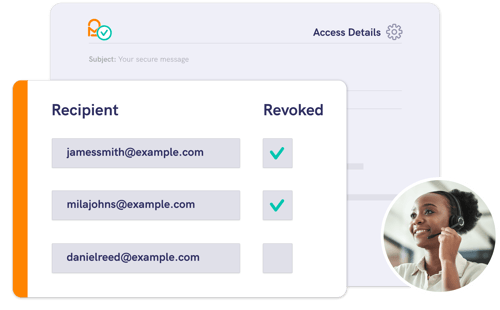Customer satisfaction is crucial. Protecting customer data, especially when communicating over an unsecured channel like email, is essential for maintaining trust and building lasting relationships.
Here are 11 steps to follow to send secure customer emails and protect sensitive information from unauthorised or unintended access.
1. Deploy an Email Policy
Deploying an email policy helps align employees with company aims and safety protocols.
The policy should outline essential responsibilities and regulations, helping staff maintain appropriate conduct and prioritise cybersecurity.
2. Don’t Use Public Wi-Fi
Public Wi-Fi is open to everyone, offering convenience but also a prime opportunity for cybercriminals.
Some networks may be fake hotspots designed to intercept data. Others may be vulnerable to man-in-the-middle attacks.

Always send customer data via a secured network.
3. Know Your Compliance
No matter your industry, you must uphold regulations. GDPR is one such requirement, ensuring businesses protect customer data.
Customer emails are a key focus. Staying on top of legislation ensures your communications remain compliant.
If you work in financial services, check out our email compliance checklist or explore the best secure email services for built-in compliance.
4. Avoid Personal Devices
Remote working has popularised bring your own device (BYOD) practices.
These devices often lack robust security, making them targets for malware and other threats.

30% of organisations provide no protection against malware on staff devices. Use company-issued equipment or install protection software as standard.
5. Use a Strong Password
‘123456’ is still the most common password - and it takes less than a second to crack.
A weak email password gives cybercriminals easy access to all your customer conversations.
The National Cyber Security Centre recommends using a mix of uppercase and lowercase letters, numbers, and special characters. A great technique is combining three random words for strength and memorability.
6. Prioritise Staff Wellbeing
Burnout causes fatigue and stress, leading to mistakes - like sending sensitive info to the wrong recipient.

Ensure teams receive appropriate support and a healthy work-life balance. Read more in our 'Fighting Fatigue' whitepaper.
7. Apply Authentication
Two-factor authentication (2FA) is an essential safeguard. It requires identity verification before email content can be accessed.
Whether via SMS, Q&A, or another method, authentication adds assurance and helps avoid data breaches.
8. Invest in Encryption
Email encryption scrambles your messages and attachments to hide them from unauthorised third parties.
The Information Commissioner’s Office (ICO) advises using encrypted channels when transmitting personal data.
Basic built-in encryption may not suffice in regulated sectors. Purpose-built secure email software provides encryption and authentication in one solution.
9. Consider Email Revoke
Email recall allows you to take back an email sent in error - useful when sensitive data is involved.

Outlook's recall feature is limited. For reliable revoke capabilities, consider using dedicated email security software.
10. Log Out of Accounts
Threats aren’t always digital. Leaving your device unlocked or unattended risks unauthorised access.
Always log out of accounts and lock your screen before stepping away.
11. Train Employees
Technology is only as good as the people using it. That’s why training is an essential part of your cybersecurity strategy.
Run regular sessions to ensure your team understands the risks - and how to stay safe.
Get Protected
Following these steps will dramatically improve your customer email security. But security is never static. Stay vigilant, and keep your team informed.
References
GDPR Guidance and Resources, Information Commissioner's Office, 2024
BYOD Statistics, Finances Online, 2023
Most Common Passwords List, NordPass, 2024
Three Random Words, National Cyber Security Centre, 2023
Reviewed by
Sam Kendall, 05.06.24
Sabrina McClune, 16.06.25

 Sabrina McClune
Sabrina McClune
 Sabrina McClune
Sabrina McClune

